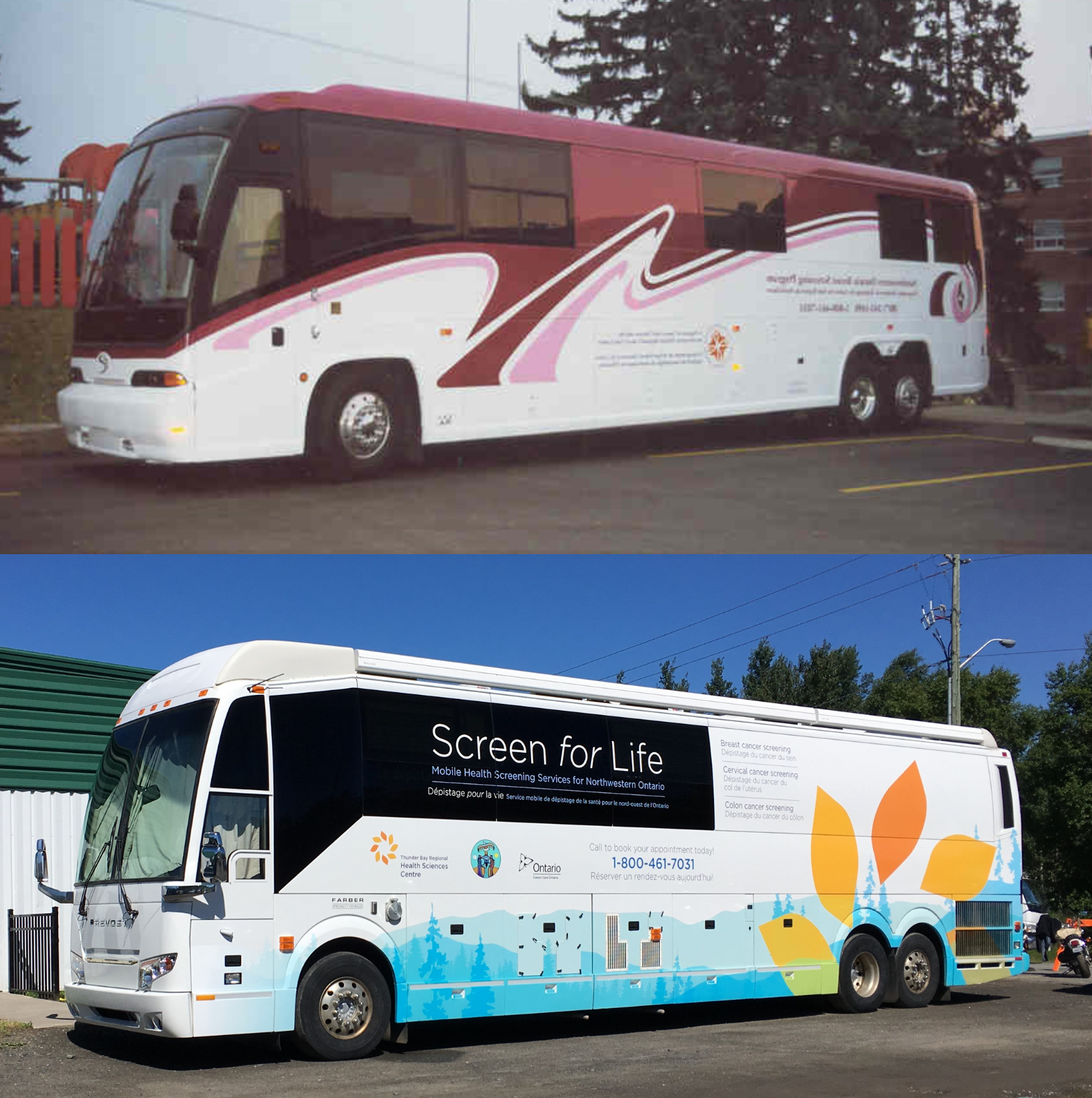
Breast cancer is the most commonly diagnosed cancer among females in Ontario. The good news: the five-year breast cancer survival rate is 89 percent according to statistics from Ontario Health – Cancer Care Ontario. Improvements in the survival rate can be attributed to increases in the number of people attending routine breast screening and improvements in treatment.
Routine breast cancer screening did not exist until the 1980’s. Mammography is the gold standard screening test used today to detect breast cancers early, when they are small and less likely to have spread. However, the mammogram that many of us are familiar with today is different from when breast imaging first became available.
The first device used specifically for mammography was introduced in 1966. It was essentially a tripod supporting a special x-ray camera. This model allowed images to be taken with the patient in a sitting or standing position which improved efficiency, but imaging was not done unless the patient had a palpable mass. Prior to this, the imaging process was tedious and slow. The patient would have to stand up and then lay down to get images from two different angles, which only allowed four to five patients to be imaged per day.
Next came xeromammography in the 1970’s, which provided better image quality and allowed physicians to see the chest and ribs. The downsides to xeromammography, included the higher dose of radiation compared to other imaging methods, manual compression of the breast resulting in inconsistent images, and the blue dye that was used for paper images created a mess.
Throughout the 1980’s, progress was made to improve the image quality by transitioning from paper images to film and compression became an automated process. In 1990, the introduction of the Ontario Breast Screening Program (OBSP), lead to greater routine participation in screening with mammography. The OBSP continues to be available for average risk women, Two-Spirit, trans and nonbinary people ages 40 to 74 with breast screening being done with a mammogram every two years. There is also a high risk OBSP for people between the ages of 30 and 69 who meet the eligibility criteria.
Organized screening has advantages, including systematized recruitment, recall and follow-up, ongoing quality assurance, quality control and evaluation. Today, breast screening is more easily accessible, with over 230 OBSP screening sites in Ontario, including five stationary locations in Northwestern Ontario and the Screen for Life Coach.
“It was unlikely in the early days of mammography, that people would have thought mammography units could be placed on a bus and moved from community to community to do breast cancer screening,” said Tarja Heiskanen, Manager of Prevention and Screening Clinical Services at the Thunder Bay Regional Health Sciences Centre. “Since 1992, there has been a mobile cancer screening coach active in Northwestern Ontario. We’ve come a long way with imaging technology and our understanding of the importance of early detection.”
At the turn of the decade, we were introduced to digital mammography. Images were now read on computers rather than film. Further advances in technology resulted in the development of 3D imaging. While 2D imaging acquires two images of each breast, 3D captures up to 30 images per breast and can find about 30% more cancers. Modern mammography has made it possible to detect and treat cancer earlier, with less exposure to radiation than before.
As technological innovations are achieved and breast imaging radiologists continue to advance in their expertise, mammography is expected to remain a key player in early detection efforts.
For more information on breast cancer screening, visit www.cancercareontario.ca/en/types-of-cancer/breast-cancer/screening.
